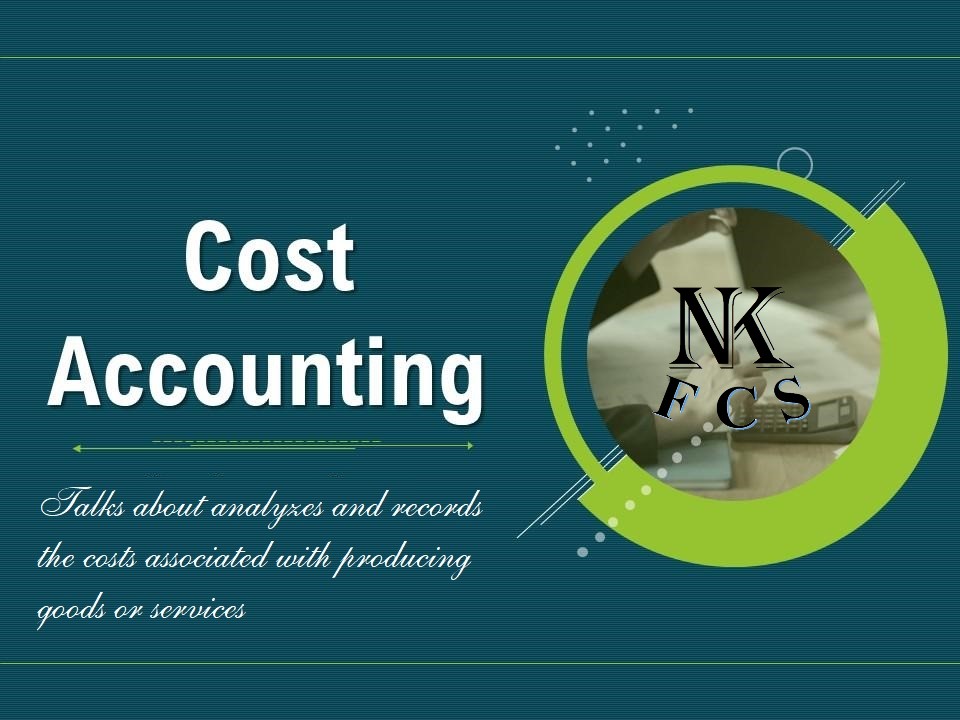COST ACCOUNTING

Scholars believe that cost accounting was first developed during the Industrial Revolution
Cost accounting talks about analyzes and records the costs associated with producing goods or services
It involves tracking direct costs as raw materials and direct labor and indirect costs overhead costs to determine the total cost of production
Also cost accounting is used by a company’s internal management team to identify all variable and fixed costs. And calculating operating costs that can be either fixed or variable, depending on the unique situation of the business which are associated with the day-to-day operations of a business
In fact, cost accounting helps you understand the cost structure of products or services. It further helps with pricing decisions and identifies opportunities for cost-efficiency improvements
Cost Accounting is also known as Industrial Accounting too and includes:
Activity-based costing (ABC)
ABC is a specialized form of cost accounting that allocates indirect costs to specific activities rather than departments or products
Standard costing
Standard costing involves establishing predetermined cost standards for materials and overhead
Cost behavior
Understanding how costs behave in response to changes in activity levels is critical in management accounting. Costs can be either fixed, variable, or semi-variable
Cost-volume-profit (CVP) analysis
CVP analysis examines the connection between costs, volume, and profit to determine the breakeven point. A breakeven point is the level of sales or production at which total revenues equal total costs. Besides using the CVP analysis to make pricing decisions, you can also use it to assess the impact of changes in sales volumes and evaluate the potential profitability of new ventures
Relevant and sunk costs
Relevant Costs relate to future and is a specific decision and will change depending on that decision and Sunk Costs are independent of any event and should not be considered when making investment or project decisions and relates to past which are considered as fixed costs
Actual Costs
Actual Cost refers to the amount of money that was paid to acquire a product or asset. This could be the historical, past, or present-day cost of the product.
In another word, it is the total amount of money paid to produce, manufacture, or acquire a product or service. Actual costs can include both direct and indirect costs
Opportunity Costs
Opportunity cost is the benefits of an alternative given up when one decision is made over another. This cost is most relevant for two mutually exclusive events. In investing, it’s the difference in return between a chosen investment and one that is passed up. For companies, opportunity costs do not show up in the financial statements but are useful in planning by management
Controllable Costs
Controllable costs are expenses managers have control over and have the power to increase or decrease. Controllable costs are considered when the decision of taking on the cost is made by one individual
Marginal Cost
Marginal cost includes all of the costs that vary with that level of production. It tells how much extra it costs to produce additional units of goods or services and also will determine how much production costs might decrease or increase based on whether or not your company needs more or less output volume. The change in quantity is based on inventory measures at various points in production and will bring change in cost too
Marginal cost offers several potential benefits, including cost advantages through increased production efficiencies and whether or not product prices should increase based on any losses
It involves current number of units produced vs. future number of units produced and current cost of production vs. future cost of production that determines marginal cost